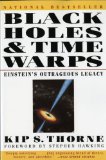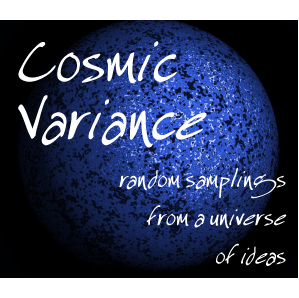Like many physicists, I spend a reasonable portion of the summer months traveling, delivering talks at conferences and workshops, and taking the opportunity to meet with colleagues and gain first-hand experience of the range of research being done in my field. For me, this began a couple of hours after my classes ended for the semester (congratulations to my General Relativity class, all of whom did very well at the end of the day), when I headed off to California to hang out with Sean for a few days and to give the Caltech physics colloquium.
I always enjoy visiting Caltech, and I find colloquia particularly fun talks to deliver, since they provide the opportunity to explain what’s going on at the frontiers of the field to physicists who spend most of their time working in their own, different areas. But this talk was particularly exciting to give, because of the location. I hadn’t realized, but the Caltech physics colloquia take place in a rather old lecture hall (201 E. Bridge) in which I was told Richard Feynman delivered his renowned lectures on physics. This part of Caltech is about to undergo a round of renovations, which meant that this was probably my last chance to speak in the same place that Feynman did – a wonderful experience. With most academic travel, the main payback from a trip like this is the chance to develop some new ideas with one’s collaborators. This time was no exception, and Sean, a student of his and I started discussions about a new dark matter idea that I’ll attempt to blog about here should it come to anything.
After a week back in Philadelphia, I was on a plane once more, this time for a short hop to my old stomping grounds in Cleveland, to take part in a workshop on gravity being held at Case Western Reserve University. The last decade or so have seen a resurgence of efforts to seek a sensible way in which General Relativity (GR) might be modified, either in ways that might yield new physics of the early universe, or in a manner that might explain phenomena at late times. The main original impetus for this work has been the possibility that the phenomenon of cosmic acceleration might be signaling a modification of gravity on the largest scales. However, among many researchers the current thrust is to gain a comprehensive understanding of the ways in which gravity may differ from GR, and at what scales one might expect any allowed modifications to appear.
It is, in fact, an extremely tricky proposition to modify GR, with almost any idea one might think of running into trouble either with established tests of the theory within the solar system, or with serious theoretical inconsistencies such as the appearance of particles with negative energies, known as ghosts. Many of the more interesting ideas involve models arising from extra dimensions, which have led not only to interesting modified gravity models, but also to new ideas about field theories in four dimensions, that I will discuss in another post soon. The gravity workshop focused on many of these new ideas, and, as often happens at small intense meetings, I left with lots of new ideas about my own work.
In June, I left for a lightning trip to Brazil, to speak at the very first meeting of the whole of the Brazilian Physical Society. This conference was held in the beautiful location of Iguassu Falls. Although I was, unfortunately, too ill from a flu I had caught to be able to travel to the falls themselves, I was lucky enough to see them from the air a couple of times. I will clearly have to go back! The meeting had several thousand people, and it was clear that Brazilian physics is undergoing a period of rapid expansion, something it is heartening to see given the pressures science is facing in many other parts of the world. One of the highlights was an event launching the new South American branch of the International Center for Theoretical Physics (ICTP). The ICTP, in Trieste, Italy, was founded in 1964 by Abdus Salam, with the goal of providing educating scientists from developing countries. Their new branch, in Sao Paulo, will be directed by Nathan Berkovitz and should extend the great work of the original. It’ll be interested to see how this endeavor develops – I wish them all the best.
I’d intended three days in Brazil, but ended up there for an extra twenty-four hours because the airport at Iguassa Falls was closed for a day by particulates from the Chilean volcano. I get delayed many times every year and find myself cursing airlines (I’d missed an important meeting in Cambridge a few weeks earlier thanks to USAir), but it’s hard to be furious at a volcano. The people at the Brazilian Physical society were wonderfully helpful and I’d like to thank them as publically as I can for taking such good care of us, dealing with our hotel rooms, and getting us rebooked on new flights.
Now I’m back to work, taking a few weeks without travel and trying to get new projects up and running, while finishing writing up a few papers before the new semester creeps up on me.


















